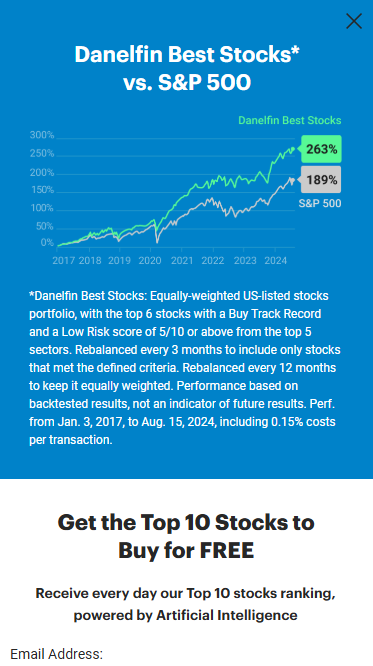20 Top Advice On Deciding On AI Stock Picker Platform Sites
20 Top Advice On Deciding On AI Stock Picker Platform Sites
Blog Article
Top 10 Tips For Evaluating The Cost And Pricing Of Ai Platform For Predicting And Analyzing Stocks
The cost and pricing of AI-powered stock prediction and analysis platforms are important in order to avoid unforeseen charges or hidden costs. Understanding the pricing structure is important for making an educated decision. Here are 10 tips to help you evaluate the price and cost of these platforms.
1. Understanding the Pricing Model
Subscription: Be sure to verify if a platform has an amount per month or year and what's included with each stage.
Pay-per-use : Confirm that the platform charges according to the usage (e.g. trades, requests for data, or forecasts).
Freemium model: Determine whether the platform provides an unpaid tier that has only a few features, and charges for premium features.
2. Compare Pricing Tiers
The features offered in each price tier (e.g. basic, professional, and enterprise).
Scalability: Make sure your pricing levels match your needs, regardless of whether you're a solo trader or a professional.
Upgrade flexibility - Examine to see if there are any easy ways to upgrade your plan or downgrade it if your needs be changing.
3. Evaluate Hidden Costs
Data fees: Check whether the platform is charging extra access to premium data (e.g. real-time data or advanced analytics).
Brokerage costs: Find out whether the platform charges additional charges for trading or connect with brokers.
API usage: Determine if API access costs are higher or if API usage is high-frequency.
4. Demos as well as Trials are Free to Download
Trial period - Look for platforms which offer an opportunity to try a demo or a free trial to try out the features before you commit.
Limitations of the trial: Make sure that it is inclusive of all features, or if there are limitations in terms of the functionality.
You have no commitment options: Make sure you are able to end the trial without having to pay if the platform doesn't meet your needs.
5. Be sure to check for discounts and promotions.
Discounts on annual subscriptions Comparing the monthly plan against the annual plan.
Referral programs. Find out if the platform offers discounts or credits to refer users.
Ask about bulk or institutional pricing if your organization is large.
6. Examine the Return on Investment (ROI)
Cost in relation to. value: Determine if the features and forecasts of the platform justify its cost. It can save you money or make better trading decision-making.
Find out the platform's success rate or user testimonials to assess its potential return on investment.
Alternative costs: Comparing prices for the platform with the cost that could be incurred if it's not utilized (e.g. lost opportunities, manual analysis of data time).
Review Cancellation Policy Policies for Review
You should be able to cancel your subscription at any time without paying any fees or penalties.
Refund policy Check whether the platform will reimburse you for unused portions.
Auto-renewal. Check whether the platform will automatically renew your subscription. If so you'll need to find out how to unsubscribe.
8. Price transparency is essential.
A clear pricing page - Make sure there are no extra charges on the pricing page.
Customer service: If you have any queries regarding pricing or extra costs, please contact customer support.
Contract terms: Make sure you understand the service terms and any penalty.
9. Compare to Competitors
Comparing the features and prices of different platforms against their rivals can help you find the best deal.
Feedback from users: Learn what other people think about the platform to determine if it is worth the price.
Market positioning: Determine whether it's priced at a high-end, mid-range, or low-cost choice and if it is in line with what you would expect.
10. Examine the Long-Term Costs
Price increases: Find out whether the platform has a track record of increasing prices and how often this occurs.
Additions of features: Check if your current plan includes new features or needs an upgrade.
Scalability costs - Make sure that the cost of your platform is affordable even as your trading volume or data demands increase.
Bonus Tips
Trial multiple platforms: Test different platforms in free trials to test their value and performance.
Negotiate the cost: If you are a frequent user or a part of a large institution Ask about discounts or special pricing.
Look for free educational tools and resources. Some platforms offer tools for education or resources that are complimentary.
If you follow these guidelines You can easily evaluate the costs and prices of AI stock predicting/analyzing trading platforms and ensure you select one that's within your budget and offers the capabilities and performance you require. A good-quality platform will offer a balance between cost and performance, which will help you maximize your trading success. Check out the best additional resources on ai for investment for more examples including ai for stock trading, ai investment platform, ai for investment, options ai, best ai stock, ai trading, ai investing platform, investing ai, ai for investing, ai for stock predictions and more.
Top 10 Tips On How To Evaluate The Speed And Latency Ai Technology For Predicting And Analyzing Stocks
When evaluating AI trading platforms which predict/analyze price movements the speed and latency of processing are key factors, particularly for high-frequency and algorithmic traders. Milliseconds of delay could impact trade execution and profitability. Here are the top 10 suggestions for evaluating the speed and latency of these platforms:
1. Real-time data feeds that are to be evaluated
Data delivery: Check that the platform is able to deliver data in real-time, with a minimal delay (e.g. less than a millisecond).
Data source proximity - Look to determine if the servers on your platform are near important exchanges. This will cut down on data transmission times.
Data compression: Check to see if there are effective methods for data compression that will increase the speed of delivery of data.
2. Test Rate for Trade Execution Rate
The time it takes to process your order is the speed of your order that is processed and executed by the platform.
Direct market access: Check that the platform allows direct orders to be sent to the exchange.
Check for detailed execution reporting including timestamps and confirmations of your order.
3. Assess Platform Responsiveness
User interface (UI speed): Check how fast the system responds to inputs such as clicking buttons or loading charts.
Chart updates: Make sure that visualisations and charts update in real-time and without delay.
Performance of mobile apps If you're using a mobile application, ensure that it runs just as fast as your desktop version.
4. Check for low-latency network infrastructure
Locations of the servers The platform must use high-speed, low-latency servers which are close to major financial hubs or exchanges.
Co-location services: Find out whether your exchange offers this option. This lets you host trading algorithm on servers near the exchange.
High-speed Networks: Check the platform's use of a fiber-optic high-speed network or other technologies that have low latency.
5. Test the backtesting and simulation speed
Test the speed at which your platform can analyse and analyze the historical data.
Simulation latency: Ensure the platform can simulate trades in real-time with no significant delays.
Parallel processing: Find out if the platform uses the concept of distributed computing or parallel processing to speed up complex calculations.
6. Evaluation of Latency in API
API response: The performance of the platform's API is evaluated by the time it takes to respond to requests.
Rate limits: Verify that the API has adequate rate limits to avoid delays during high-frequency trading.
WebSocket support Make sure your system is running the WebSocket protocol for low-latency, real-time data streaming.
7. Test platform stability under load
High volume trading scenarios Test the platform's stability and ability to respond by simulated trading scenarios.
Market volatility: Try out the platform in times of high volatility to see if it can handle rapid pricing adjustments.
Utilize the tools available on the platform to stress test your strategies under extreme conditions.
8. Examine Connectivity and Network
Internet speed requirements: Check that your internet connection meets the recommended speed of your platform to achieve optimal performance.
Reliable connections: Make sure that the platform has redundant internet connections in order to avoid interruptions.
VPN latency. Check to see if you're using the VPN if this introduces latency.
9. Check for Speed-Optimization Features
Pre-trade Analyses: Make sure that the platform includes the pre-trade analysis in order to maximize order processing and execution speed.
Smart order routing (SOR): Verify that the platform is using SOR to determine the most efficient and cost-effective execution locations.
Monitoring latency: Check if your platform has tools that let you examine and monitor latency in real-time.
10. Review User Feedback and Benchmarks
User reviews: Read feedback from users to evaluate the platform's speed and latency performance.
Third-party Benchmarks: Discover independent benchmarks that compare the speed of a platform to its competitors.
Case studies Ask the platform whether it has case studies or testimonials that highlight its capabilities with low latency.
Bonus Tips
Use the free trial or demo period to test your platform’s speed and latency under real-world conditions.
Support for customers: Check to determine if the platform has assistance with issues related to latency or for optimization.
Hardware requirements: Determine if the platform requires specific hardware (e.g. high-performance computers) to achieve optimal speed.
By using these tips, it is possible to precisely assess the speed, latency, and precision of AI analysis and stock prediction systems. This allows you to select a system according to your specific needs in trading as well as reducing any delay. Low latency can be crucial for algorithmic or high-frequency traders where even small delays can be a significant factor in their profits. Read the top rated click here on ai share trading for site examples including stock trading ai, ai tools for trading, investing with ai, ai stock trader, trading ai tool, ai copyright signals, ai stock prediction, best ai stocks, ai stock price prediction, ai for trading stocks and more.